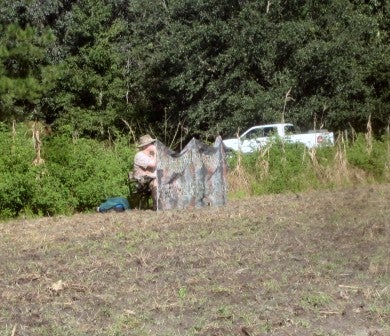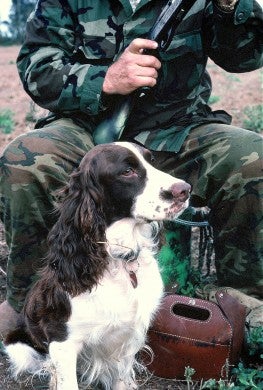Dove Hunting Dos and Don’ts, Part 1
Bob McNally 09.14.15

Ever notice how many successful dove hunters are consistently “high guns” whenever they step into a field? Certainly such dead-eye wingshooters hit most of the birds they swing on, but they are also veteran students of knowing where and how to take doves. They’ve learned from long experience the “dos and don’ts” of collecting fast-flying birds by selecting the most choice stand locations from which to hunt, as well as utilizing the best gear and tactics. Equally important, they also know how to recognize poor stand sites in a field and avoid them.
Following are some solid dos and don’ts of dove hunting that are sure to increase your take of the bullet-quick birds.
—Do study a dove field carefully with binoculars a day or two before a hunt. On some fields it’s possible to drive around their perimeters to get a better, close-up look at best spots for stands. Sometimes checking a field at dawn reveals where to hunt that afternoon.
—Don’t assume that just because last time you hunted a field a great stand automatically is a hot spot this time at the field. Conditions change, and so, too, do the way doves work into and out of a field.
—Do hunt near a prominent “dip” or slot in perimeter timber, a noticeable place where the prevailing height of trees is significantly shorter. This can be a natural flight lane or funnel for doves. Take a stand 50 to 75 yards out in a field facing the tree gap so you can spot incoming birds before they pass you. Birds leaving the field and flying toward the gap won’t surprise you from behind because hunters farther out in a field likely will be shooting at them, which alerts you to turn around.
—Don’t move until the last possible moment before shooting. Too many hunters see incoming doves, then fidget around with their guns or turn their bodies in preparation for a shot. Even slight movement can alert fast-flying doves, causing them to flair and climb, thus offering a long shot compared to what would have been a close one.
—Do be patient before choosing a dove stand. Sit on a field edge and observe hunting action other sportsmen experience before rushing into a field. On most dove shoots there are “early birds” that wing over a spot before the bulk of birds arrive. Learn from them. Watch where they enter a field and where they exit. These paths or “flight lanes” often indicate routes other doves will approach and depart a field as birds increase and shooting heats up.
—Don’t overlook a hill or “high spot” in a field for a shooting site. Even a slight field rise is easily seen by doves and is a natural flight target for them. If you can take a stand between a perimeter woods line entrance spot for birds and a hill, you may have a choice dove stand for birds arriving and leaving a field.
—Do be watchful for dove “perching sites” where birds sit just before landing in fields. Such spots usually consist of tall, sparse trees and can be found in overgrown mid-field fence lines or field “islands” of timber. Similar “islands” can be formed by old abandoned farm machinery, dilapidated farm buildings, tall brush or log piles, broadcast towers, etc.
—Don’t hesitate to change hunting locations if you’re not getting shots at doves slipping passed your stand 50, 100, even 200 yards away. Doves tend to fly the same route, and if they’re winging wide of your blind, move to their “flight lane.” Naturally, be courteous to other hunters and don’t encroach on their hunting spots. It’s common, however, for a hunter in a hot stand to take a limit in short order. In such a case if the limited-out shooter leaves, don’t hesitate to move your stand to his old location.
—Do try to locate “lines” on the ground doves can follow. Doves track fence, power, telephone, and ditch “lines,” much the way flying ducks follow ice edges and weed lines in open water. Telephone and power lines are especially good for doves since they also serve as “perches” for birds coming into a field. However, towering “high-tension” power lines are not choice for hunting because wires are so high birds fly above shotgun range.
“Lines” made by farming practices can be dove travel lanes. Such a line could be a strip of standing sunflowers next to a harvested section. Sometimes such farming “lines” are difficult to detect, but doves looking down as they fly high overhead easily see them. Places where two or more “lines” meet are especially good for a stand because they draw birds from different directions. The juncture of two fence lines or two power lines, for example, may be prime.

